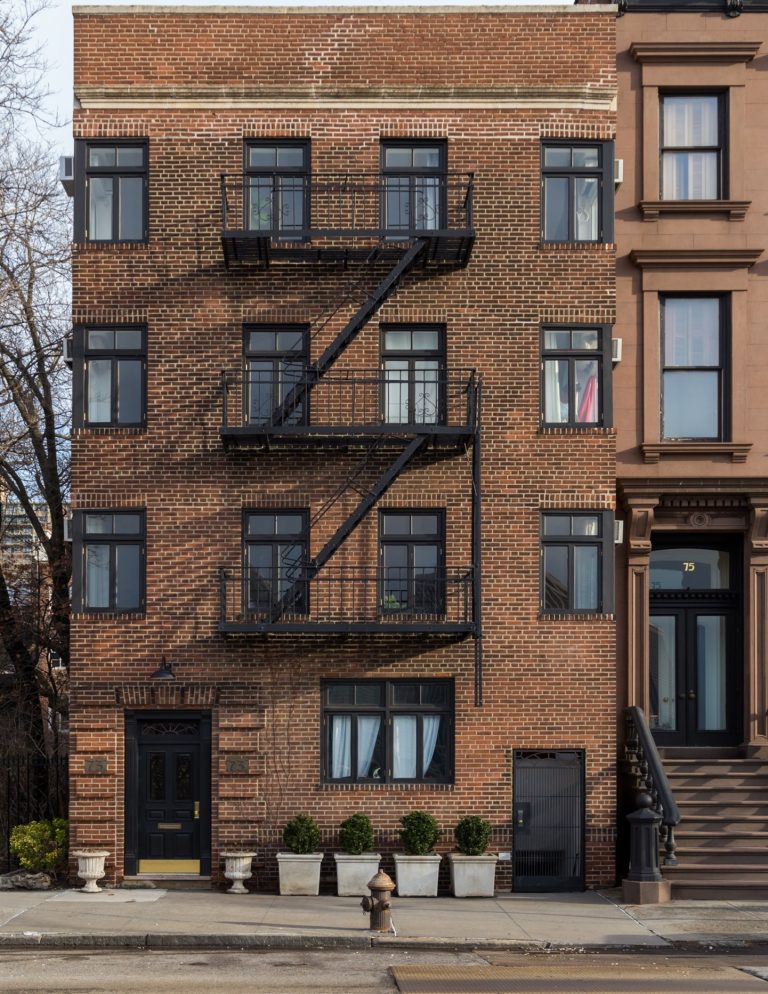If I break my lease early, doesn’t my landlord have to find a new tenant? Or am I liable for the rest of the lease?
April 6, 2025
For the next few months in 2025, I am going to spend some time in these pages cross-promoting my very popular podcast, the Tenant Law Podcast – listen on Apple, Spotify, YouTube, or wherever there are awesome podcasts. This blog post expands on Tenant Law Podcast Episode 20.
Today we are discussing cases interpreting the relatively new Real Property Law § 227-e, which governs a residential landlord’s duty to mitigate a tenant’s lease default. This is so important to so many New Yorkers. This can potentially protect people from thousands of dollars of liability when they break a lease early.
First let’s set the stage with some context.
Let us say that you want to break your residential apartment lease in NYC before its natural termination date. Maybe you got another job or opportunity in another city, or maybe your partner did, maybe something changed and now you cannot afford the rent, maybe you dislike the apartment and found one better and cheaper, whatever it is, you want to leave, and the lease is not up yet.
So, you left early or are leaving early (before the end of the lease), and the landlord tells you that you will continue to owe rent through the balance of the lease term.
The first question I always get asked in these situations is whether the tenant has any defenses to owing rent for the rest of the lease.
First, I remind you that a lease is, among other things, a binding legal contract. You are not allowed to just change your mind.
A valid defense might exist if your landlord physically locked you out of the apartment or if conditions in the apartment are so bad that it is impossible for you to be anywhere in the apartment – maybe from water damage or a gas leak or some type of structural collapse (something so extreme that even though you are not actually locked out, it is physically impossible for you to be present in the apartment). This is typically not the case in the majority of lease break scenarios.
Before RPL § 227-e, tenants had very few defenses when they broke a lease early. However, since June 14, 2019, we have Real Property Law § 227-e:
“In any lease or rental agreement, excluding any real estate purchase contract defined in paragraphs (a), (c) and (d) of subdivision four of section four hundred sixty-one of this chapter, covering premises occupied for dwelling purposes, if a tenant vacates a premises in violation of the terms of the lease, the landlord shall, in good faith and according to the landlord’s resources and abilities, take reasonable and customary actions to rent the [apartment] at fair market value or at the rate agreed to during the term of the tenancy, whichever is lower. If the landlord rents the premises at fair market value or at the rate agreed to during the term of the tenancy, the new tenant’s lease shall, once in effect, terminate the previous tenant’s lease and mitigate damages otherwise recoverable against the previous tenant because of such tenant’s vacating the premises. The burden of proof shall be on the [landlord]. Any provision in a lease that exempts a landlord’s duty to mitigate damages under this section shall be void as contrary to public policy.”
[Emphasis supplied.]
In other words, residential landlords in New York State have a duty to attempt to mitigate a tenant’s damages. The landlord cannot just sit around and do nothing and keep charging the tenant for a vacant apartment. The landlord must at least try to find someone else. That’s big.
As a practical matter, most landlords do attempt to mitigate, and did attempt to mitigate even before there was a statute requiring them to do so. Landlords make more money with a tenant in the apartment than they do chasing tenants who have left.
But the crucial question is – What does it mean that the landlord has to “use good faith in accordance with its resources and abilities” in its attempts to mitigate tenant’s damages? How is the “fair market value” the landlord is supposed to seek from a new tenant determined?
One of the highest level cases is 14 East 4th Street v. Toporek, 203 AD3d 17 [1st Dept 2022], where the landlord met its burden under RPL § 227-e under the following circumstances. The case concerned a 10-room luxury apartment. It was a two-year lease with a $17,500/month rent. The lease was going to end in October 2020 and tenant left in May 2020. That was potentially over six-figures in liability for this tenant. The landlord put in an affidavit detailing the steps it took to re-rent the apartment, which included:
- Right after the tenant left, the landlord paid for listings of the apartment on multiple online real estate listing platforms, including StreetEasy, Zillow, Trulia and Naked Apartments and the apartment was immediately listed. The landlord provided a printout from StreetEasy’s website confirming the date of the listing at a monthly rent of $20,000 and that she then lowered the rent to $18,000 in October 2020.
- That rent was higher than what the tenant’s rent was under the lease, so did that mean that the landlord was not listing the apartment in good faith? The landlord’s position was that, although each listing is seemingly higher than tenant’s rent under the lease, the landlord was offering prospective renters rent concessions and agreeing to pay one month’s broker’s fee, if any. The landlord explained that with these concessions, the net effective rate of rent would actually be less than tenant’s obligation under the lease.
- The landlord’s spreadsheet documented the 60 inquiries received regarding the apartment from June 2020 through February 2021, when it was finally re-rented. The spreadsheet provided the date of each inquiry, the source of each inquiry (i.e. StreetEasy, broker, etc.), and the landlord’s responses.
- The landlord’s agent personally conducted nearly a dozen video walkthroughs and over three dozen live showings of the apartment, even though New York was still in the throes of the Pandemic.
- The landlord also provided listings of comparable apartments available for rent during that period.
- The landlord was not able to find a new tenant for the apartment by October 2020 when the tenant’s lease ended.
The tenant in 14 East 4th Street had no evidence to refute that the landlord made a good faith effort, so the Court found that just because the landlord’s efforts to re-rent were not successful, it did not mean that the landlord did not satisfy its duty to attempt to mitigate, so RPL-227-e was no defense to tenant owing the rent through October 2020.
In Astor 207 Properties v. Monfreid, 76 Misc.3d 1210(A), [New York State Supreme Court, New York County 2022], the landlord was held to have satisfied its duty to mitigate when it listed the apartment right after tenant left, but then subsequently withdrew the apartment from the market when it discovered the unit was damaged, but then fixed it and re-listed it promptly. That is an interesting twist.
In Kakade v. Newman, 79 Misc3d 304 [New York State Supreme Court, New York County 2022], the tenant signed the lease but never moved in. The landlord sued the no-show tenant for the rent. The landlord listed the unit right away, as soon as the tenant defaulted, but for $50 more than the tenant was paying in the lease. The rent in the lease was $3,250, the listing was $3,300. The landlord said that the broker advised that this was the correct fair market price for which to ask. From April 2020 to July 2020, no one even inquired about the unit listed at $3300. In July 2020, they dropped the asking price to $2,900. Then they got a tenant in August 2020 for $2,800. This case points out that “the statute unambiguously requires the listed rent to be the rate agreed to under the parties’ lease if that rate is lower than the fair market value. The court found that the landlord met her burden under RPL § 227-e to show that she mitigated her damages in July when she lowered the asking rent to $2,900.00 and immediately began receiving inquiries, but not before. So, the landlord lost April to July in damages. Here we see an example of how RPL § 227-e saved a tenant from being liable for five months of rent.
In Pickens v. Lane, 78 Misc3d 1229(A) [New York City Civil Court, New York County 2023], the Court held after trial that the landlord met its burden of mitigation when it listed an apartment with a broker and started showing it to prospective replacements for the tenant before the tenant even left.
In 50 W Dev. v. Azoulay, 2023 WL 6011065 [New York State Supreme Court, New York County 2023], the lease went through February 2021 and the tenant left suddenly and without warning in July 2020. Here, the landlord did not list the apartment for rent. Why? The broker for the landlord testified that it was not the customary practice to list all available apartments for lease to the public at large if there are similarly sized apartments already available. This is so because a large number of vacancies may scare off prospective tenants, as prospects may perceive that there are undisclosed problems in the building, or prospects may perceive that the rents are set too high. Here, many units in the “C” line were already listed, so the landlord did not list the subject apartment.
But the broker in 50 W Dev. testified also, using her Outlook schedule, that the subject apartment was shown forty-six (46) times between August 2020 and March 2021. She also shared emails. However, the tenant claimed that the landlord failed to mitigate its damages by admittedly failing to list and advertise the apartment in its own usual channels of listing, i.e., in the widely used publication for listing available residential units in New York City, called “StreetEasy.” Or some other widely-known and used publication. And that in February 2021 the unit was listed on Street Easy and then rented one month later. The tenant demanded discovery from the landlord (exchange of documents) and the landlord ignored those requests.
The Court in 50 W Dev. did not make a final decision, but denied the landlord summary judgment and stated that the landlord failed to sufficiently establish that it took reasonable and customary actions to mitigate its damages, holding that:
“While this court notes plaintiff’s contention that it believed that not listing the apartment was the best strategic approach to relet the premises after defendant vacated the apartment, this raises issues of fact as to whether said strategy was reasonable and customary, especially in light of defendant’s position that the premises was expeditiously relet after being listed on the StreetEasy website in February 2021.”
These cases raise some fascinating takeaways that you should keep in mind if you are planning to break your lease early in New York State.
Do you see how only reading a statute, and not exploring the cases that interpret it, leave you with only a portion of the story about what your rights and defenses might be? All the tips I am about to give you I am culling from the case law.
Tips for Breaking Your Lease Early (for the Purpose of Protecting the Mitigation Defense):
- Keep a written record of when you notify the landlord that you are breaking the lease early, because this starts the “mitigation clock”. If you leave in the middle of the night and do not tell anyone, and there is a lag before the landlord knows you are gone, then the landlord cannot be held responsible for not listing an apartment that it did not even know should be marketed.
- As soon as you inform the landlord that you are leaving early, it is time to start closely monitoring Street Easy and other apartment listing services in your immediate neighborhood and monitoring the building’s website to see if your apartment is listed and for how much. If the apartment is not listed, you can argue that you do not owe the rent because the landlord failed in its duty to attempt to mitigate by not listing the unit.
- If the apartment is listed, printout screen shots of the rent listed and the move-in date offered. If the rent is higher than what was listed in your lease, as we saw above, you can argue that you do not owe the rent because the landlord failed in its duty to attempt to mitigate by not offering the apartment for the same rent or lower.
- If the landlord is listing the unit at a lower rent, get records of the market rent for similar units because a lower rent than you were paying does not necessarily mean the rent being asked for was market level. It could still be too high. So, grab comparable rents.
- These cases might benefit from a tenant demanding discovery from landlord – emails with prospective new tenants, and spreadsheets or customer relationship management platform data about how many showings there were, and invoices for listings. Maybe a broker should be subpoenaed. The problem here is discovery is where legal cases begin to get expensive, very expensive because discovery takes a lot of time. As with all litigation, the expense needs to balanced against the potential liability for the rent owed. If you are going to spend $25k to attempt to protect yourself from $25k in liability, that might be a decision you need to rethink.
- Document thoroughly the condition you leave the apartment in. The landlord may say there was a delay in listing because the apartment was left in bad shape by you and needed a lot of work.
Respectfully submitted,






